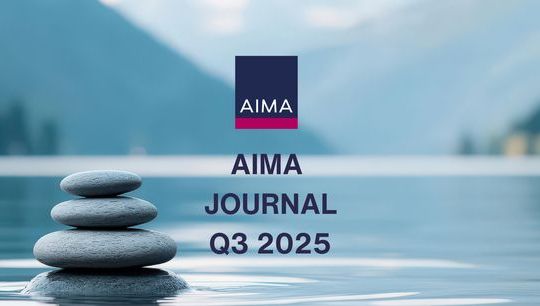Lender on lender violence: The meaning of Uptier Priming Debt
By James Grand; Ben Jones; Hannah Ward, Simmons & Simmons
Published: 18 November 2024
Position enhancing transactions (PETs) are now commonplace as restructuring tools in the US leveraged loan market. In recognition, European CLO offering circulars now permit CLO managers to invest in Uptier Priming Debt.
Uptier Priming Debt describes the super priority debt that results from a PET. A distressed debtor colludes with a sufficient majority of its lenders to exchange their existing holding of first or second lien for new super priority debt, on condition (in the form of an ‘exit consent’) that they vote to release covenants that protected their original holding but – and here’s the twist – the exchange offer isn’t made to all holders – only to those invited who commit their votes to achieve the requisite majority.
The ‘winning’ majority trade some combination of new funding, extended maturity, and a discount on the exchange, against a higher coupon and improved probability of repayment. The ‘losing’ minority are subordinated down the new order of priority, with the prospect that they will be wiped out if the debtor company becomes insolvent.
Abandoning the pro rata treatment of creditors leaves investors in leveraged debt transactions with many reasons to feel queasy. CLO investors checking to see if their deals allow for Uptier Priming Debt should note that restructured obligations (and similar) have long been a constituent of CLOs. Eligibility criteria commonly require a first priority security interest and at least a 66.6% majority for any change that is averse to lenders’ interests, but that does not stop a PET. Following the precedent set in the US by Serta Simmons, PETs can be blocked by “a few carefully chosen words” in the debt terms (see "A few carefully chosen words" box) but do not violate implied covenants of good faith and fair dealing. Which begs the questions: which bonds and loans in the portfolio have the necessary blockers? If PETs are a risk in documents governed by US laws do PETs also work under English law?
Not just a US problem?
To the English courts, it has always been axiomatic that powers given to majorities in a company’s constitution allowed them to control their own but also others’ property and so were liable to abuse. The law should therefore protect the minority from being expropriated. Reconciling this concern with the problem of ‘hold outs’ blocking restructurings for their own purposes, led English law down two parallel tracks.
Statutory schemes of arrangement (now Part 26A of the Companies Act 2006) were introduced early on to facilitate restructurings; providing a court sanctioned process to compromise the debts of a company on the basis of a 75% majority of each relevant class. The court’s role was to ensure the overall fairness of the scheme and the legal certainty of its outcome. Fairness in this context includes testing whether creditors in each relevant class would be treated the same way in whatever the alternative may be to the scheme - usually insolvency – thereby upholding the pari passu principle.
Separately, a legal principle (the abuse principle) emerged that the powers of majorities to bind minorities must be exercised in good faith, without oppression of the minority, and bona fide for the benefit of the relevant class as a whole – not merely individual members. This test is one of ‘rationality’; could no reasonable person honestly conclude that the decision was capable of benefitting the relevant class as a whole?
Assénagon
The force of the precedent set by Assénagon Asset Management SA v Irish Bank Resolution Corpn Ltd (formerly Anglo Irish Bank Corpn Ltd) [2012] EWHC 2090 (Ch) (Assénagon) justifies explanation here.
Following the 2008 credit crunch, Anglo Irish Bank failed and was nationalised. As part of its restructuring, the bank proposed to issue a senior class of debt with a sovereign guarantee, for which of holders of subordinated notes were entitled to exchange their holding in the ratio of €0.2 for every €1 held. As a condition to the exchange, holders were required to approve a resolution allowing the bank to redeem the non-exchanging holders for €0.01 per €1000 of principal. The resolution was approved by a 90% majority. Non-exchanging holders were redeemed at a 100,000th of face value.
Assénagon, an asset manager, sued and overturned the resolution on a technicality, but the judge made plain that their case would also have succeeded because of the coercive threat to the minority and the destruction of the value of the notes being of no conceivable benefit to the noteholders as a whole.
The judgment in Assénagon still leaves English law flexibility in relation to PETs. The effects of the exit consent in Assenagon were extreme. Relaxations of negative pledges, non-disposal covenants and the like may facilitate raising new funds and be beneficial to existing lenders. Other cases show that, in a restructuring context, principle can be surrendered to the practicalities of the situation.
Redwood
10 years before Assénagon Redwood Master Fund Ltd v TD Bank Europe Ltd [2002] EWHC 2703 (Ch) (Redwood) (see Redwood box) is authority that, provided there is no bad faith, “the benefit of the lenders as a whole” does not require equal outcomes between different lenders. If there is a benefit to the lenders as a whole, there can be winners and losers. The loss to one class can be the others’ gain. That fits PETs provided the benefit to the borrower equates to the benefit of the lenders as a whole. Redwood also illustrates the potential disaster that awaits if a court, applying the abuse principle, must then undo a restructuring, with the risk that the debtor will suffer some irreparable harm or be forced into a formal insolvency. This was scarcely a factor in Assénagon. Anglo Irish Bank was already insolvent, and a bespoke legislative solution was always the alternative. The consequences of reversing the “exit consent” did not weigh in the court’s reasoning when applying the abuse principle.
So, what is the future for PETs in English law?
The availability of schemes of arrangement will continue to pose a threshold challenge to the usefulness of PETs. If “a few carefully chosen words” prohibit a PET, a scheme may be the only option. Schemes, once agreed and sanctioned by the court, ensure legal certainty. For anyone subscribing a new money issue in a PET, the prospect that a challenge by an excluded minority may invalidate the transaction after the money has gone in makes the advantage of a court-sanctioned scheme obvious. Schemes may also apply to non-UK companies with English law debts. However, the jurisdiction of the UK courts is limited. Schemes are public processes and there may be practical limitations that rule a scheme out. A 66 2/3 % majority to change a loan is materially less than the 75% needed for a scheme. Nonetheless, a court may question why a PET should succeed if it would fail the test of fairness as a scheme.
The growth of the PE industry, funded on a highly levered basis by specialist lenders and CLOs, changes something in the reality from where English law’s principled pro-rata approach has developed. The money borrowed does not go to funding the borrower’s working capital but to paying a purchase price to its former shareholders or a dividend recap. The lenders’ customer is its private equity owners not the company, but, if it all goes wrong, the company alone is on the hook.
The interests of the company, with its real-world customers, trade creditors and employees, are not for nothing. Primly testing the good faith of the majority in agreeing a restructuring for the benefit of all lenders, grants this hyper-sophisticated community protections beyond what they are apt to negotiate for themselves (see “a few carefully chosen words”) and creates a dilemma in the law’s priorities. The consequences of violating the abuse principle are binary.
If the remedy of the aggrieved minority threatens to force the debtor company into insolvency, absent some egregious facts, a court should pragmatically opt for the lesser of two evils or stretch itself to compensate the injury by some other means.
The burden of proving bad faith will fall on the plaintiff minority. Taking the lead from Redwood, might it be possible to implement a PET that did not raise a question of bad faith by the majority? Consider the following scenario: a company, whose debt is trading at a fraction of face value and needs new funds, offers to ‘uptier’ the necessary majority, which is selected through a reverse auction of the rate at which a lender will exchange its holding into new senior debt, and approve a new money debt issue. No discretion is used to select the majority. What ‘bad faith’ is there between the majority and the minority?
Given the current distress in PE world, the English courts may soon be asked the question in relation to a PET. Good faith is not an indivisible absolute, independent of its coordinates. The precedent of US courts upholding PETs illustrates the standard of ‘good faith and fair dealing’ to which the leveraged debt market now subscribes in restructurings. And here the significance of EU CLOs providing for investments in Uptier Priming Debt will come into play. The expectations of market participants that PETs are both permissible and desirable – regardless of the outcome - will be there in the CLO offering circulars for all to see.
A few carefully chosen words.
A “Serta blocker” requires that the consent of all affected creditors is needed for amendments that “subordinate, or have the effect of subordinating, the obligations hereunder to any other indebtedness [or] the liens securing the Obligations to liens securing any other indebtedness.”
A “Chewy Blocker” refers to provisions of a credit agreement intended to prevent a subsidiary guarantor from being released from its guaranty obligations because it is no longer wholly owned by the borrower.
A “J. Crew blocker” prohibits the transfer of specified assets (commonly limited to IP that is “material” to the overall business) to unrestricted subsidiaries.
Redwood relates to the restructuring of a distressed company’s debts.
The lenders under a fully drawn B Facility formed the majority authorising the waiver of a condition precedent that permitted the defaulting borrower to drawdown on a smaller A Facility under the same agreement. The drawing was used to repay the B Facility in part.
Switching the drawings between the B and A Facilities, optimised and extended the borrower’s repayment profile.
Some B Facility lenders had sold their A Facility commitment, leaving the A Facility-only lenders as net payers-in, to the benefit of those B Facility lenders whose overall exposure was reduced.
The court upheld the waiver on the basis that there was no evidence of bad faith by the majority and the resulting overall reduction in the Facilities agreed with the borrower was of benefit to all.





